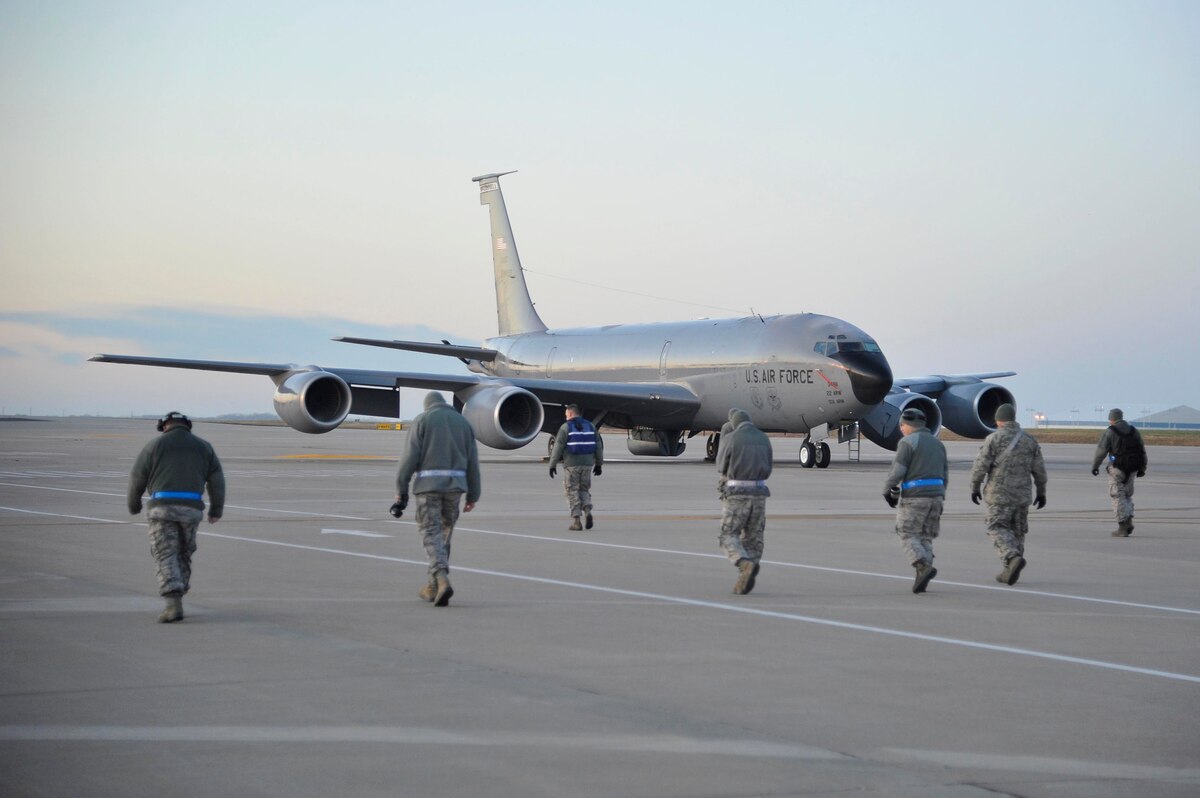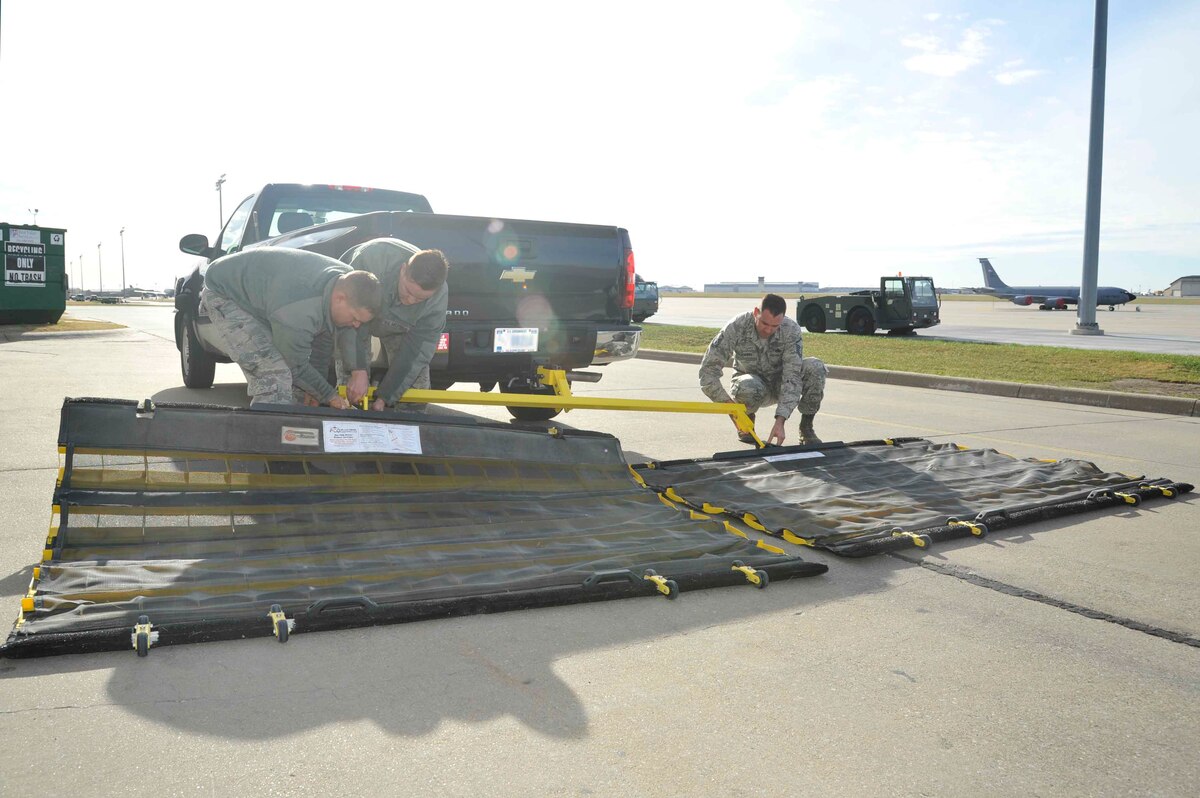Military aviation organizations typically have a critical requirement for effective foreign object damage prevention (FOD) programs. Their flights provide national security functions, aircraft are often uniquely susceptible to debris ingestion, and suspending operations due to a FOD incident can impact critical mission capabilities.
To get a better handle on how these army FOD programs work, we compared literature describing the foreign object damage prevention programs of four military organizations – the United States Air Force Air Combat Command, the United States Navy (USN), and two local stations of the United Kingdom’s Royal Air Force, front-line base RAF Waddington and joint operating base RAF Gibraltar.
Suggested Resources
Check out our articles on The Essential Guide to Military FOD Prevention or How to Set Up a FOD Program for more information.
Comparisons are based primarily on the following publicly-available documents:
- Air Combat Command Guidance Memorandum to AFI21-101_ACCSUP, Aircraft and Equipment Management
- The Naval Aviation Maintenance Program Basic Instruction
- RAF Waddington Defence Aerodrome Manual
- RAF Gibraltar Defence Aerodrome Manual
Additional comments are based on our observations as an experienced supplier of ground support equipment to U.S. and allied military aviation.
Terminology
Definitions of FOD across the organizations all adhere to the same basic concept – an object that is not where it is supposed to be and is capable of causing damage. Keep in mind that both “foreign object debris” and “foreign object damage” are described by the same acronym, FOD.

FOD Walk. U.S. Air Force photo/Airman 1st Class Erin McClellan.
ACC describes foreign object damage as “any damage to an aircraft, engine, aircraft system, component, tire, munitions, or SE caused by a foreign object(s) (FO) which may or may not degrade the required safety and/or operational characteristics of the aforementioned items.”
RAF Gibraltar defines foreign object debris as “any material (including loose articles) that originates from any source, either external to or part of an air system, which can cause damage to that air system or its equipment.” The instructions also list numerous examples, such as mislaid tools, plastics bottles, unsecured hardware, and pieces of asphalt or concrete.
This is where RAF Gibraltar differs significantly from ACC. The latter categorizes material from the “air system” – as opposed to an external source – as a “dropped object” and has a separate “Dropped Object Prevention (DOP) Program to manage it.
USN also lists numerous examples of foreign object debris, focusing on where the debris is as much as what it is, such as “metal or wire clippings, solder balls, and other debris left near, or in electrical terminals, circuitry, connectors, or components.”
Then it goes on to describe FOD in terms of the possible damage that such as object can cause. “Potential FOD is a condition where a foreign object is in a position to cause damage when a product or system is used.”
RAF Waddington’s manual does not include a definition of FOD.
Responsibility
In all four organizations, ensuring the effectiveness of the FOD progam at a specific base is the overall responsibility of a commissioned officer. One or more subordinates, either commissioned or non-commissioned, are responsible for carrying out day-to-day program management.
In Air Combat Command (ACC), overall responsibility falls to the FOD Prevention Program Manager, a title held by the Deputy Wing Commander, who is the wing’s second in command and holds the rank of colonel. Having a senior field officer oversee efforts helps to emphasize to the troops that management treats FOD prevention seriously.
Day-to-day management is normally delegated to a career sergeant in the maintenance community, who holds the title FOD Monitor and is usually also the Dropped Object Prevention (DOP) Monitor.
USN also has a FOD Prevention Program Manager, who is appointed by a ship’s, station’s or air wing’s commanding officer, and whose rank is not specified. That individual works as part of the FOD Prevention and Investigation Team which, depending upon location, may include such personnel as the Quality Assurance FOD Program Monitor, Power Plant Supervisor and Safety Department Representative.
At RAF Gibraltar, overall responsibility is held by the Air Safety Manager, who may hold the rank of flight lieutenant. The FOD Prevention Officer, likely another junior officer, reports to the ASM and manages day-to-day duties. Both individuals have the opportunity to address the Air Safety Committee during its regular meetings.
RAF Waddington’s program is largely managed by a Station FOD Prevention Committee consisting of over two dozen personnel from various units. It reports to the station commander.
Focus
ACC has the most detailed prevention procedures for crews to follow during maintenance and flight operations. For instance:
Remove metal identification bands from all tubing (except aircraft installed egress system components) and cables on the aircraft. With the exception of factory-installed ID tags attached to cargo chains/devices to identify the type being used, remove metal identification bands from cargo tie-down chains/devices prior to use around aircraft.
While USN has fewer prevention procedures, it contains detailed instructions for scheduling inspections and reporting incidents. For instance:
If determined to be non-reportable FOD, submit a written report of the incident. The report must contain the elements required in an Engine FOD Incident Report naval message. The report must be signed by the Maintenance Officer (MO) and reviewed by the Commanding Officer (CO). The written report will be retained by QA until the engine is transferred.
RAF Gibralar has a relatively short document, with more general instructions all around. However, it does include an interesting section covering on-site contractors, especially those who are not permanently stationed there. For instance:
DIO Airfield Facilities Manager is to conduct an inspection of the work site to ensure that all debris has been cleared. If the inspection reveals that ineffective FOD measures have been adopted by the Contractor, their details are to be passed to the ASM and held by DIO for future reference.
On the other hand, RAF Waddington simply states that the “continued use of sound engineering practices is an essential element of FOD prevention.”
Of course, it is possible that procedures not mentioned in these instructional texts might be covered more thoroughly in other documents.
Sweeping
All organizations require a mandatory sweep of the flight area at least daily, usually prior to the first day’s flight. In some cases, an additional monthly sweep is performed for selected areas.

Friction Mat sweeper. U.S. Air Force photo/Airman 1st Class Erin McClellan.
In ACC, the use of mechanical sweepers, vacuum sweepers, magnetic bars and even sweeping by hand is “highly encouraged.” Otherwise, none of the instructions that we reviewed discuss specific sweeping technologies. In practice, ACC (and other military organizations) also employs additional sweeper technologies, such as friction mats.
Whereas ACC refers to a large detail of personnel tasked with collecting FOD manually as a “FOD walk,” RAF Gibraltar refers to it as a “FOD Plod” and USN a “FOD walk down.” Even with the growing availability of high tech FOD detection and ever-more-effective sweepers, these manual walks are still generally required across all services.
Conclusion
Overall, the four military organizations approach FOD prevention with a strong focus on having a formal FOD manager and administrator team that oversees the army FOD program, good work and engineering habits among line staff, and strict reporting requirements. Any differences are most likely related to that organization’s overall work culture, not their approach to FOD safety.
Both military and civilian organizations should take inspiration from the dedicated efforts of modern air forces to keep their flight areas clean, safe and ready to sortie.
